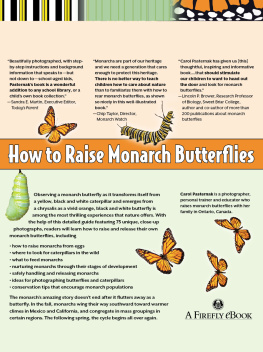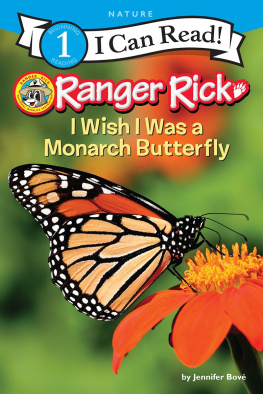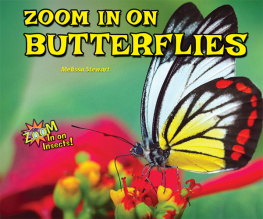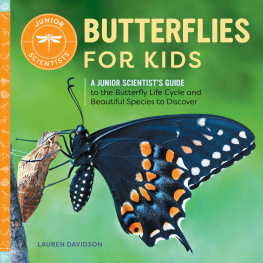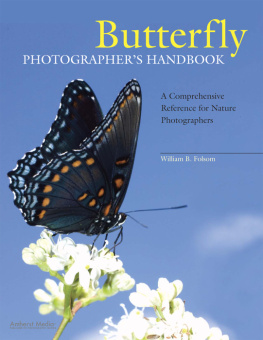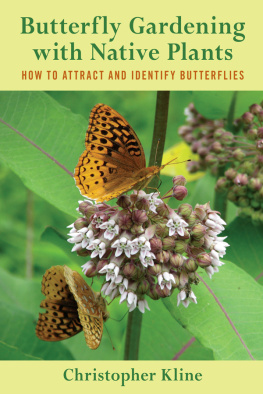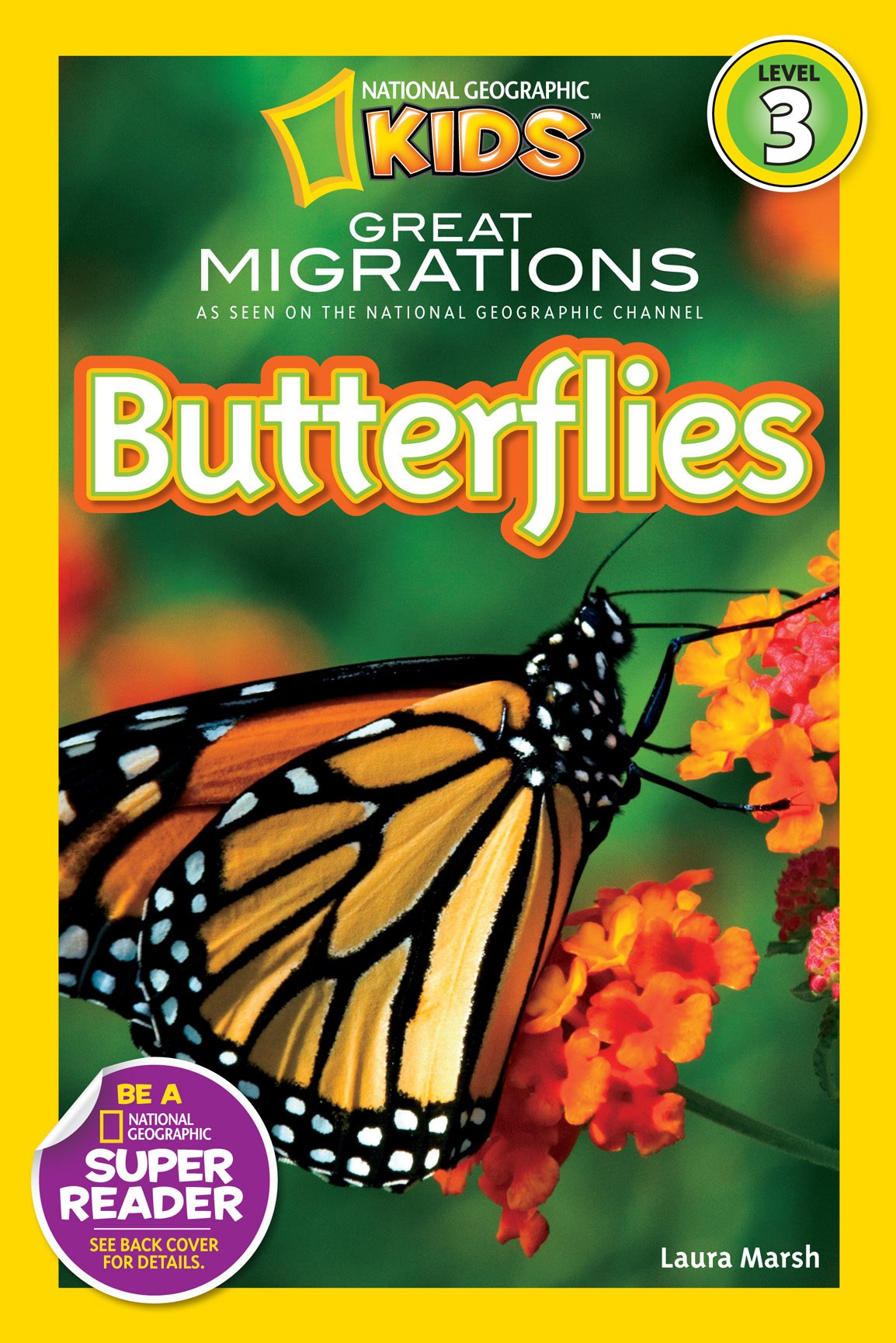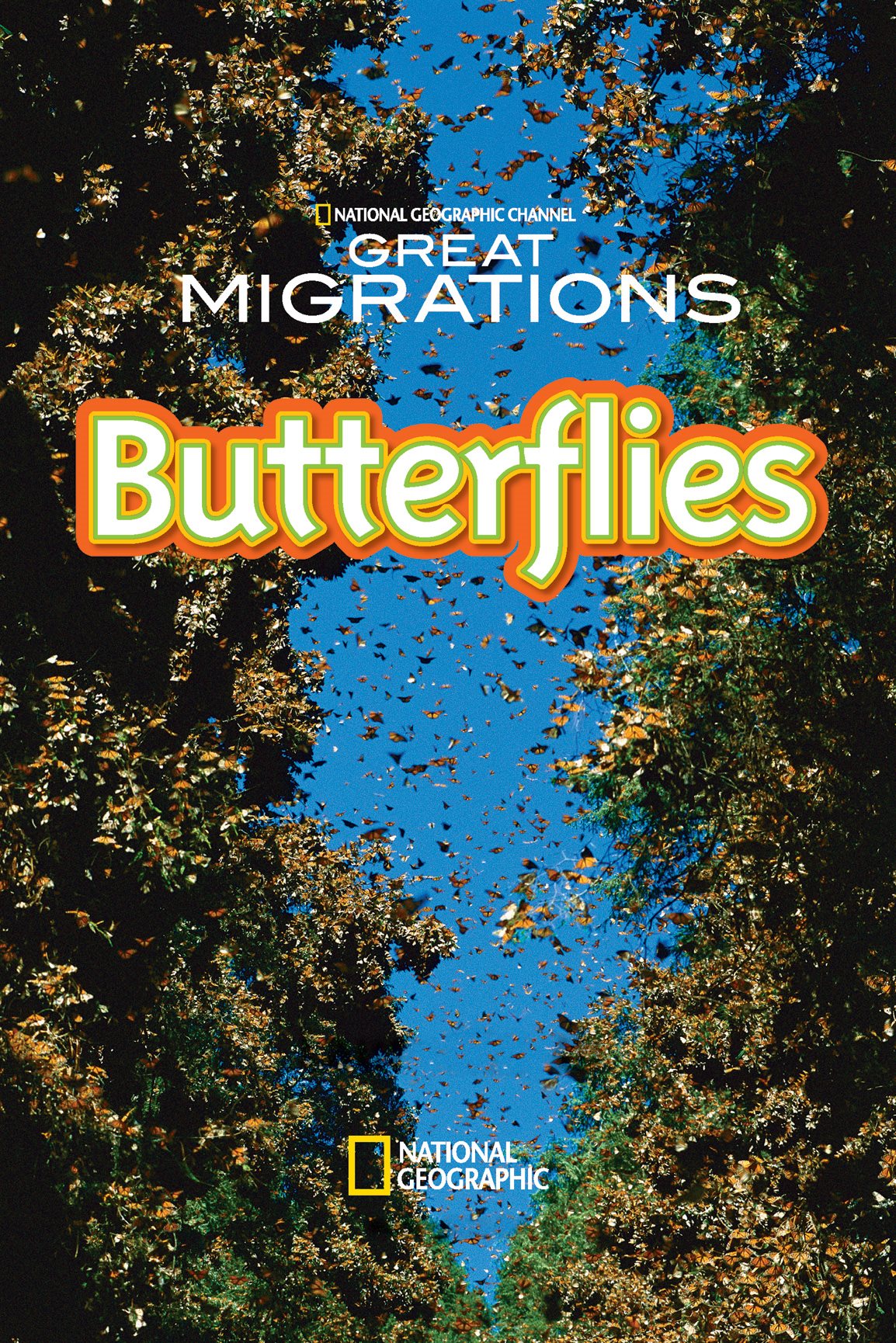Washington, D.C.
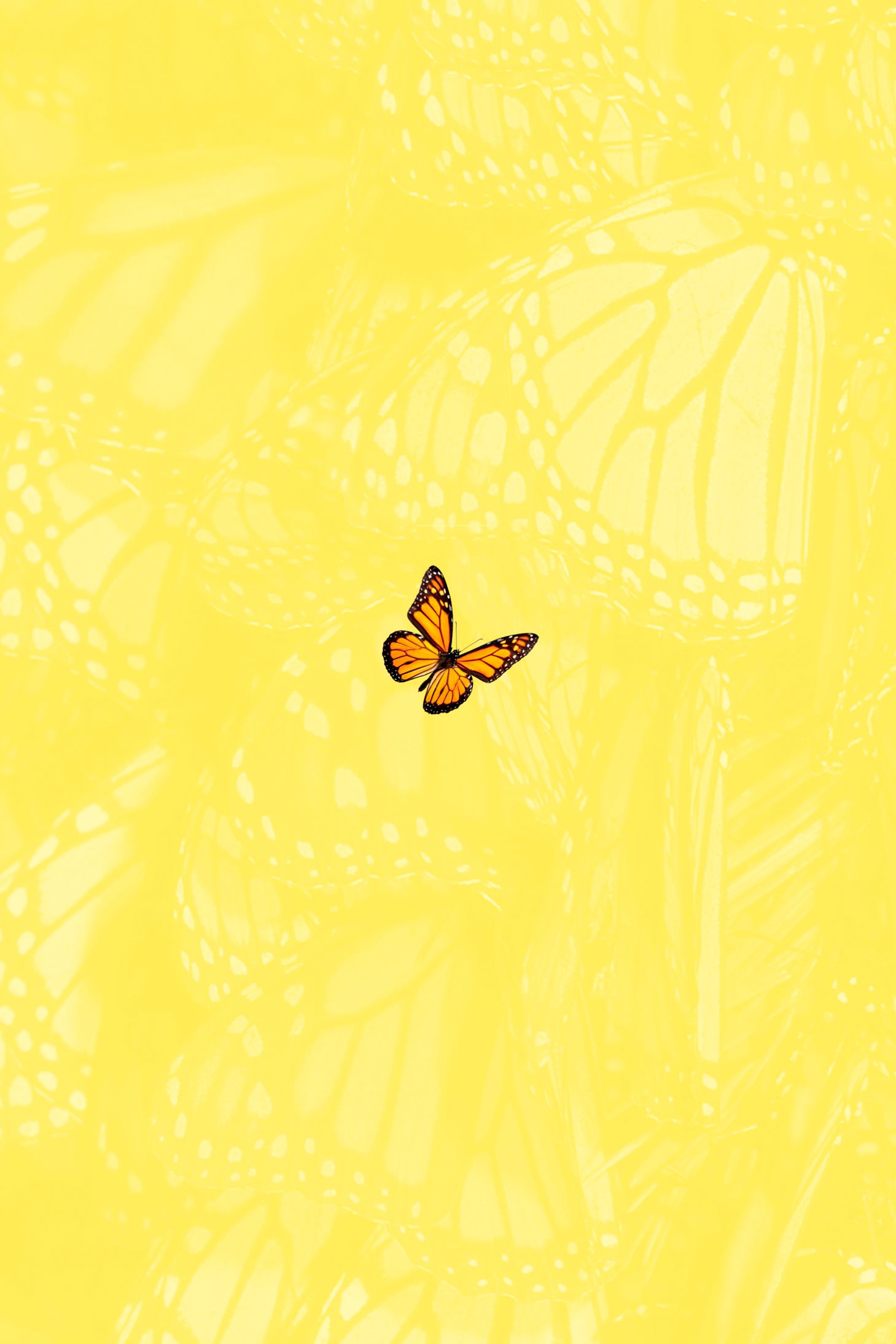
For Aunt Jodie
L.F.M.
Copyright 2010 National Geographic Society
Published by the National Geographic Society, Washington, D.C. 20036
All rights reserved. Reproduction in whole or in part without written permission of the publisher is strictly prohibited.
eISBN: 978-1-4263-1313-4
Abbreviation Key: GET = Getty Images; IS = iStockphoto.com; NGS = NationalGeographicStock.com; NGT = National Geographic Television; SS = Shutterstock.com
Cover, Medford Taylor/NGS; , Digital Vision/GET

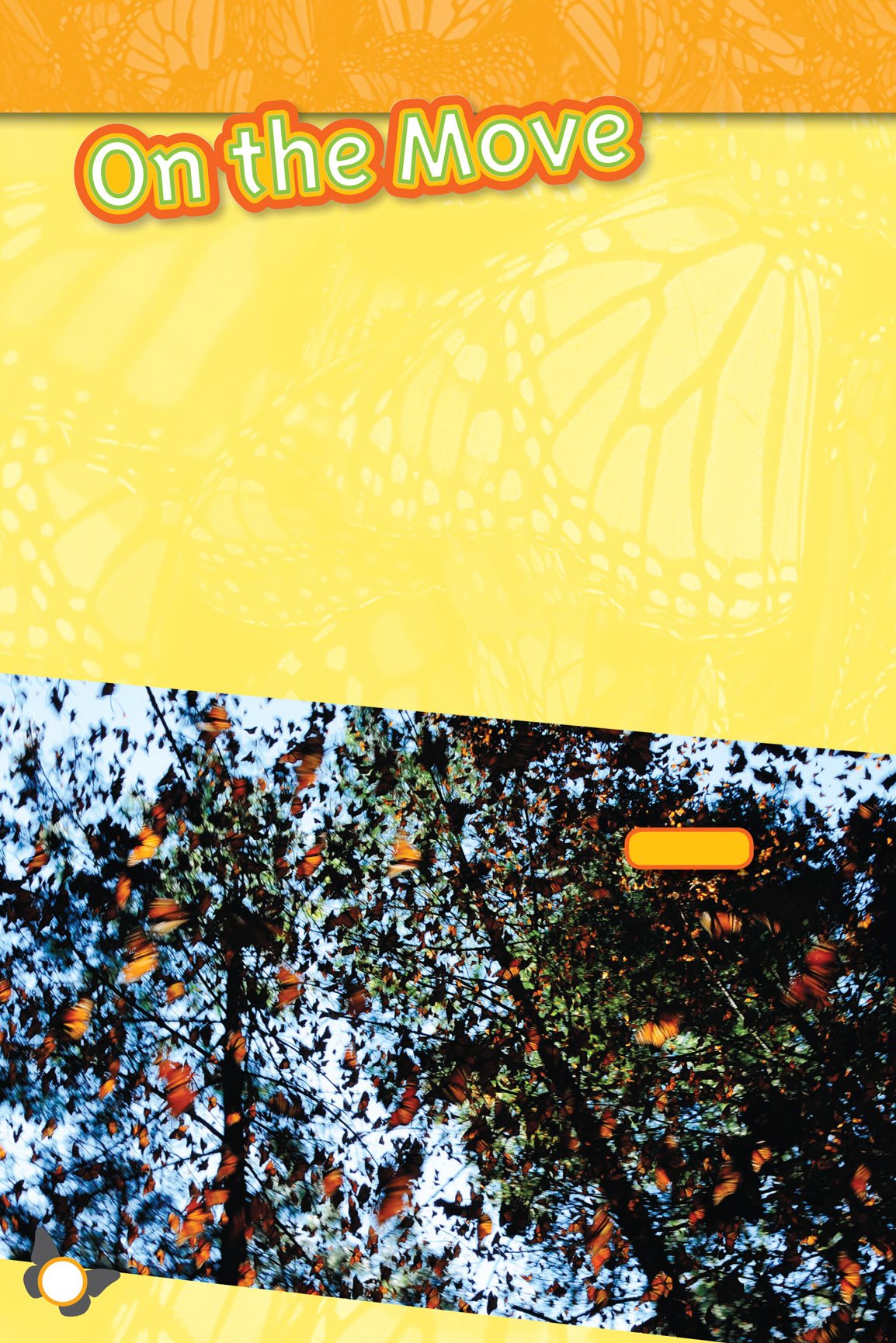
When animals travel from one region or habitat to another, it is called migration. Animals migrate in search of food or a mate. Migration helps animals survive on Earth.
Many animals migrate. The monarch butterfly is one of them.
monarchs

wildebeest
MIGRATION: Moving from one region or habitat to another for food or a mate
MATE: Either a male or female in a pair. Most animals need a mate to have babies.
red crabs
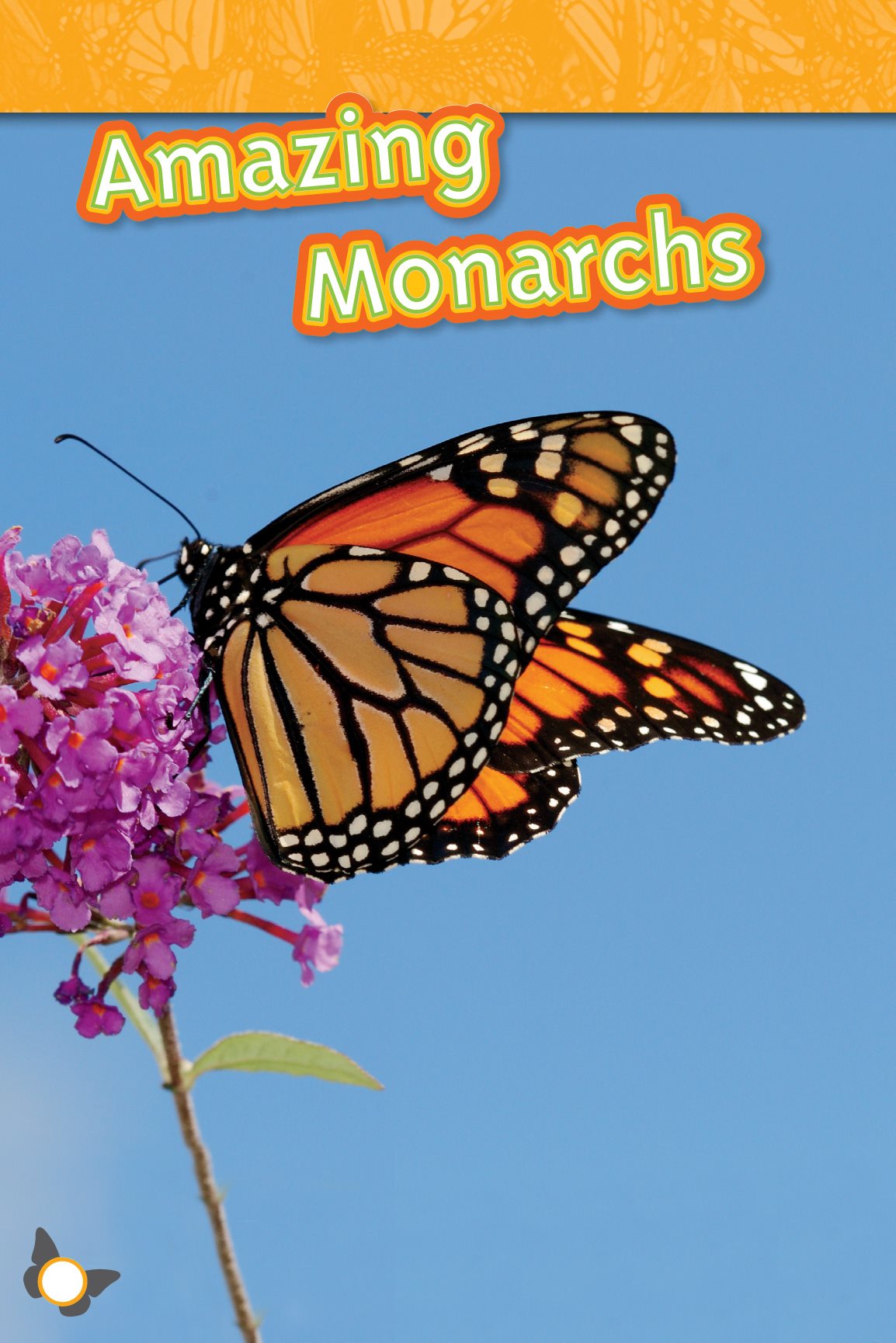
What insect is black and orange and flies the farthest of any on Earth?
You guessed it, a monarch butterfly!
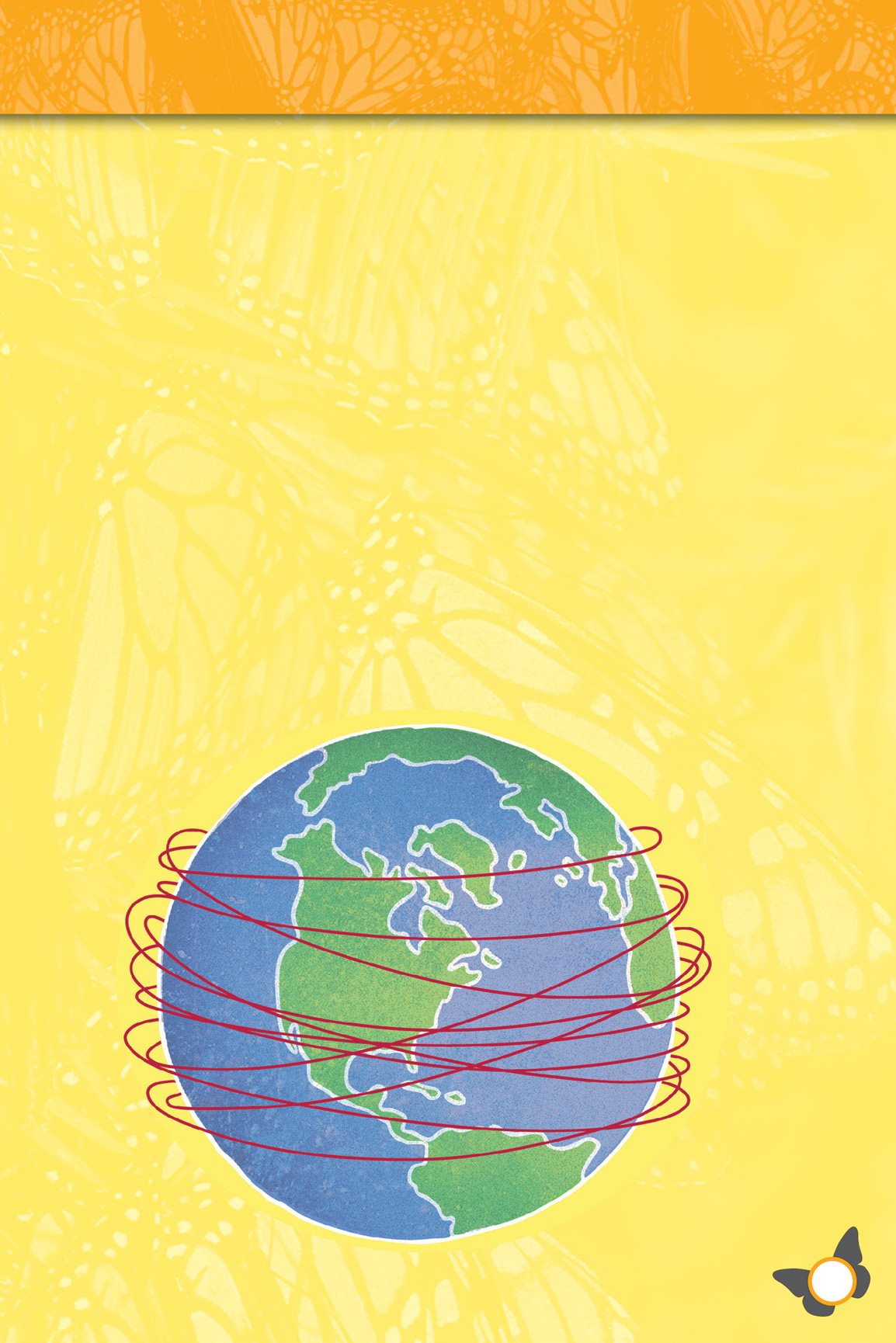
Monarch butterflies migrate 2,000 to 3,000 miles. They travel to the forests of Mexico from the United States and Canada and back every year.
Since butterflies are so small, a mile is much farther for them than for people. A butterflys 2,800- mile trip is like a person traveling 275,000 miles. Thats like walking around Earth times!
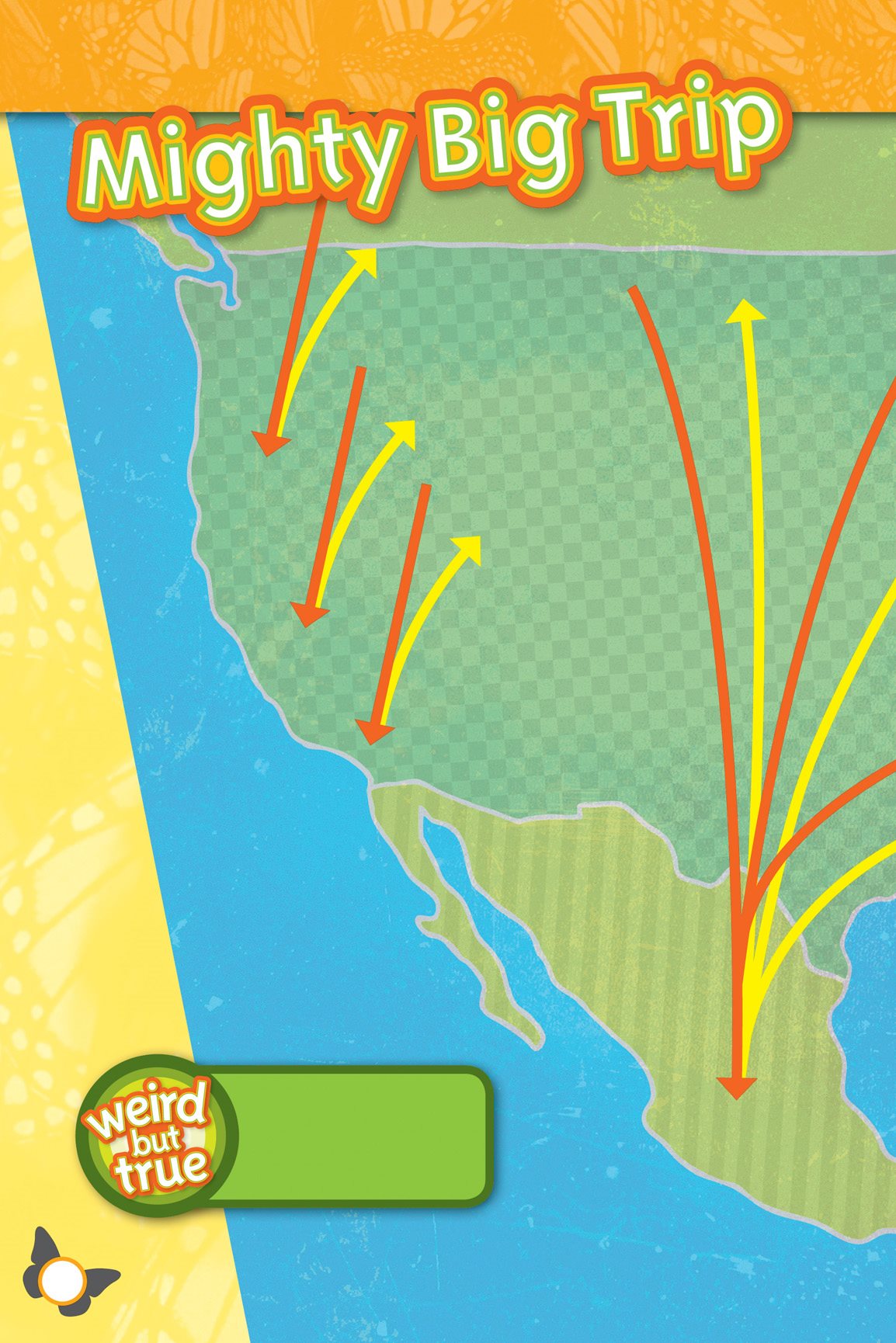
Western Migration
Eastern Migration
Mexico
Rocky Mountains
Monarch caterpillars get oxygen through holes in the sides of their bodies.

Canada
United
States
Two Monarch Populations
The western population migrates along the Pacific coast of the United States. The eastern population migrates east of the Rocky Mountains in the United States and Canada all the way to Mexico. This book is about the eastern population.
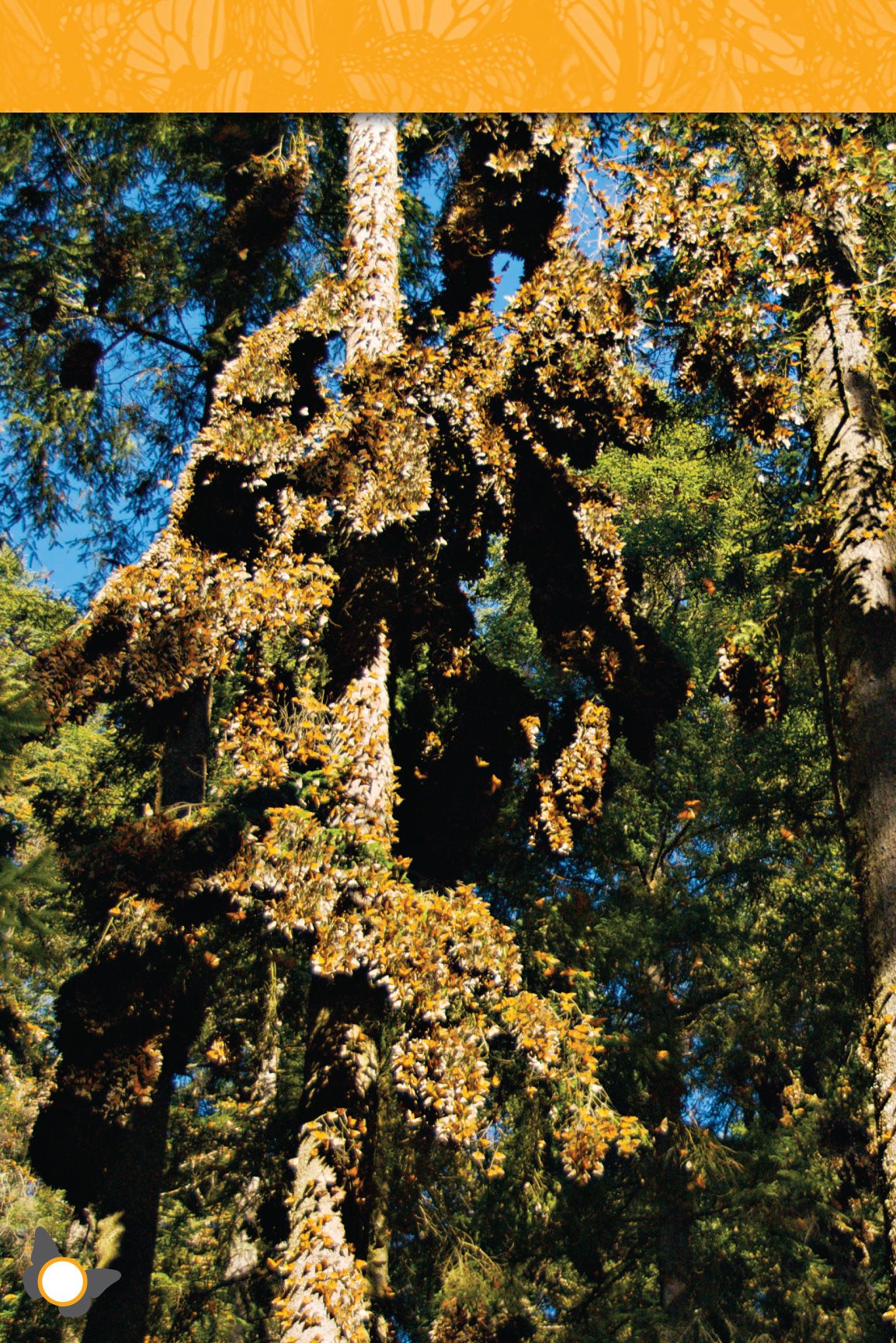
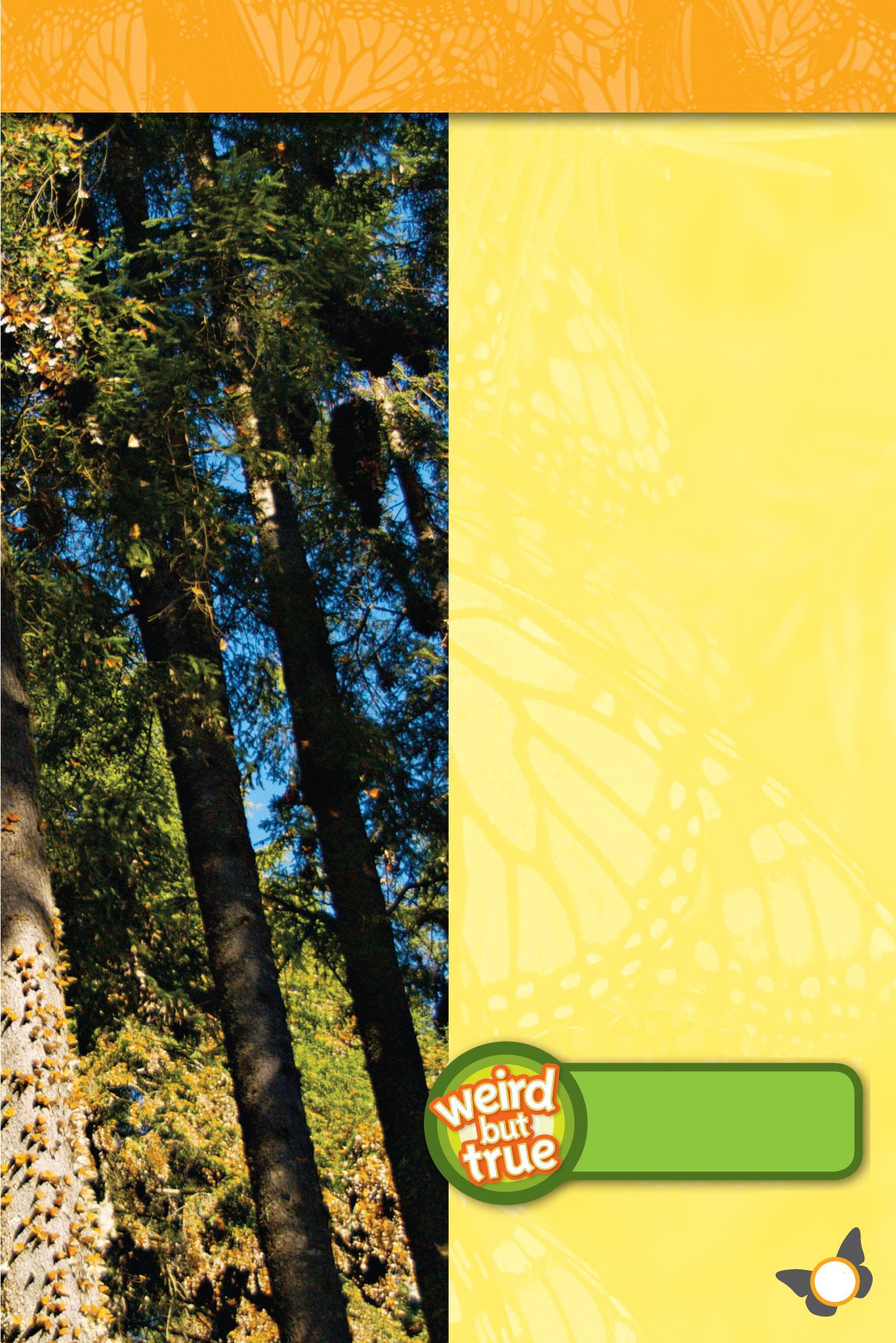
It is winter. In the Oyamel (Oh-ya-mehl) forests of Mexico, clusters of butterflies make the trees look orange. There are so many butterflies, they could cover football fields! Here the monarchs rest and wait for spring.
A butterflys antennae and legs provide its sense of smell.
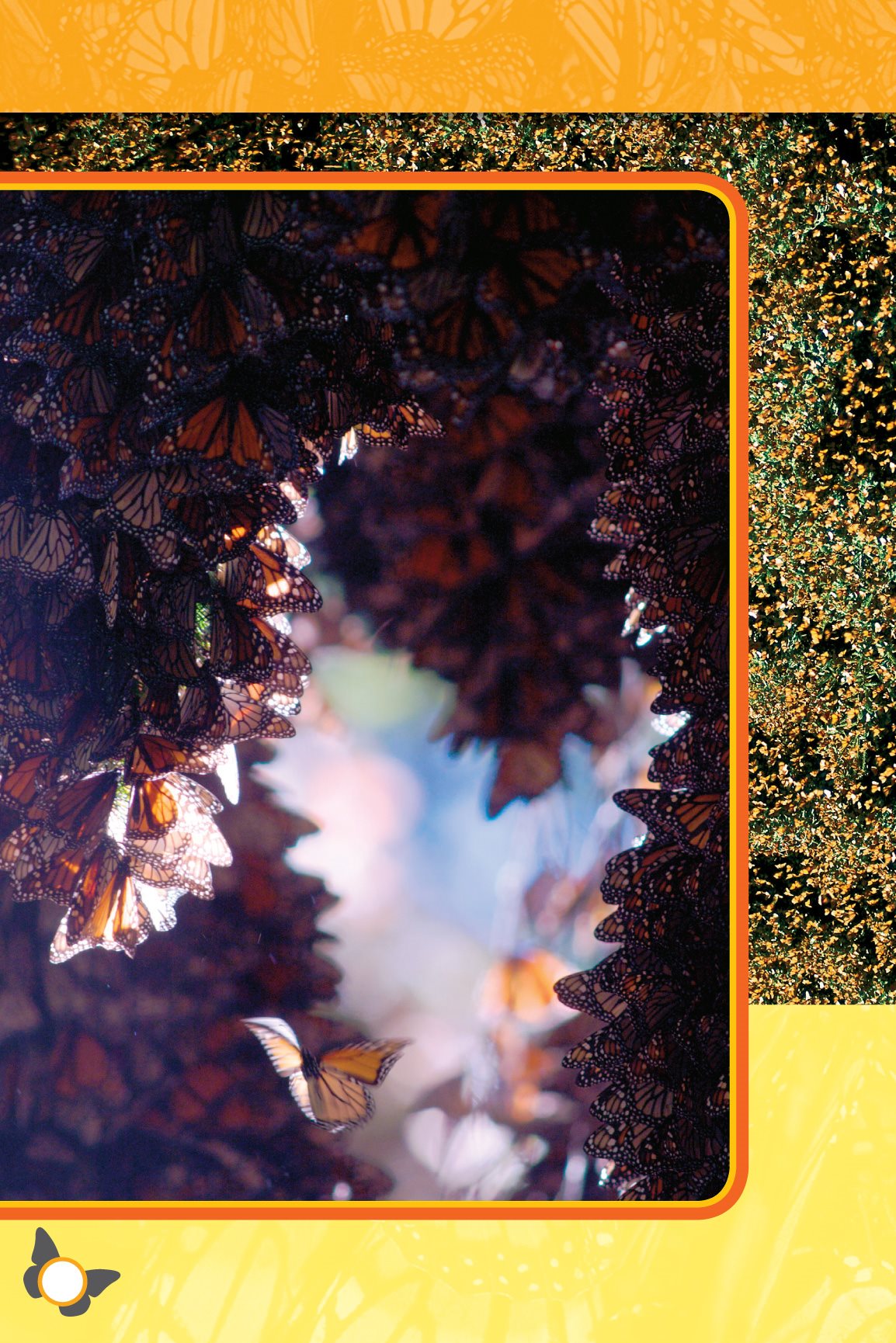
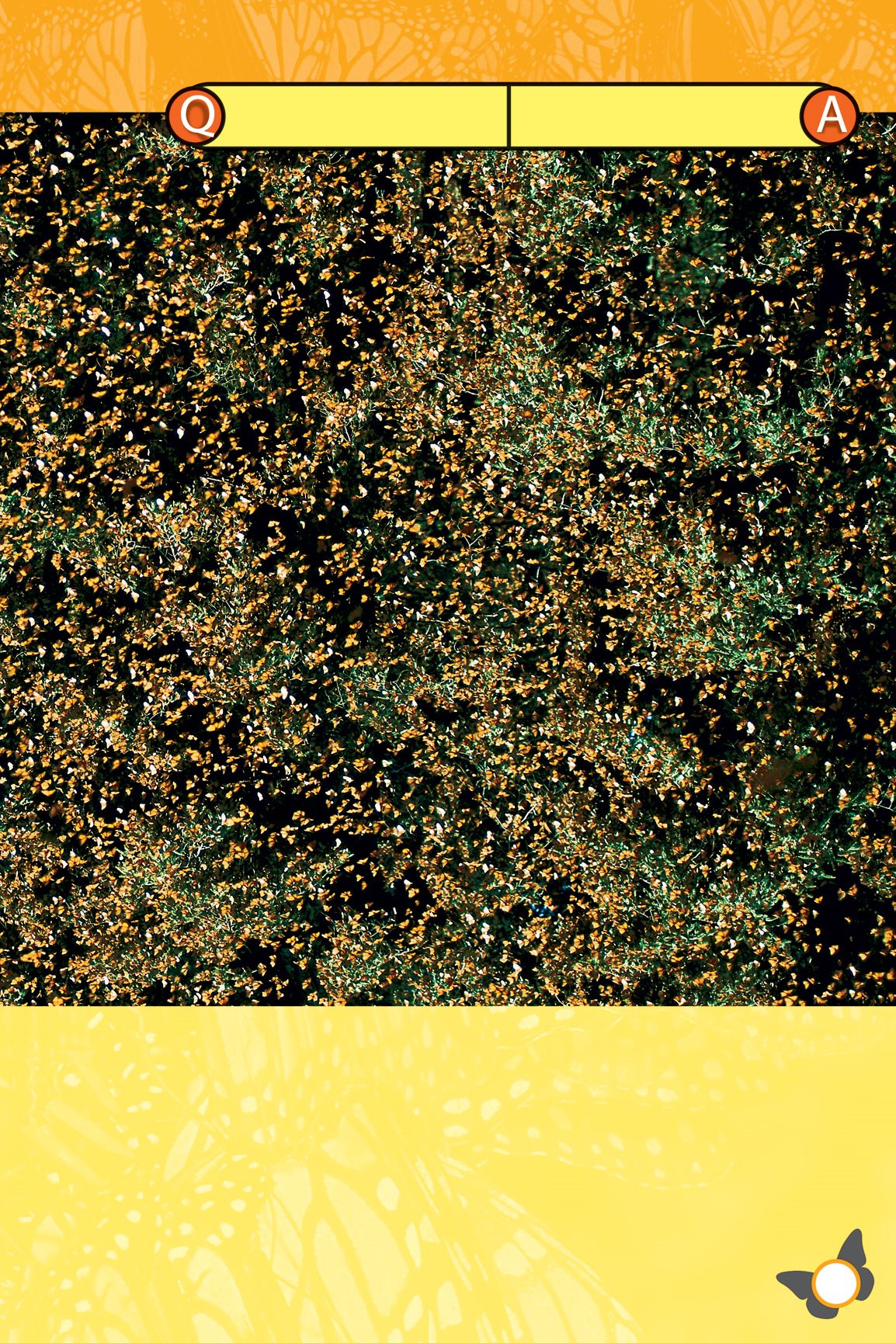
In the spring, swarms of newly awakened monarchs cover the trees and fly through the air. Millions of monarchs are ready to leave Mexico.
Why couldnt the butterfly come to the dance?
Because it was a moth ball!
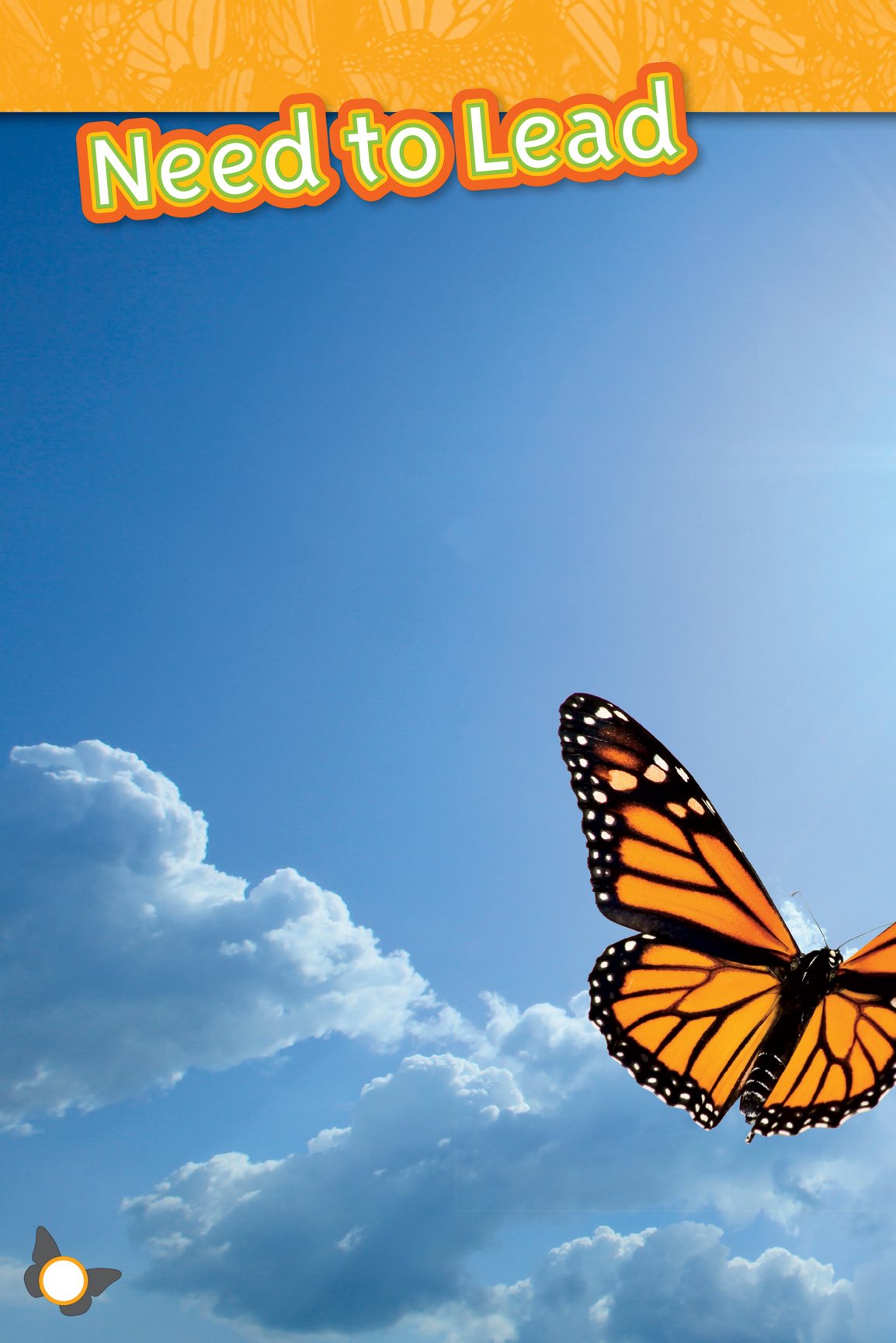
The female monarchs lead the butterflies north from Mexico.
Their parents cannot guide them. They died soon after the eggs were laid. How do these butterflies know where to go?
The monarchs know where to go by instinct. Sunlight signals them to migrate. Scientists believe that sunlight also helps guide them.
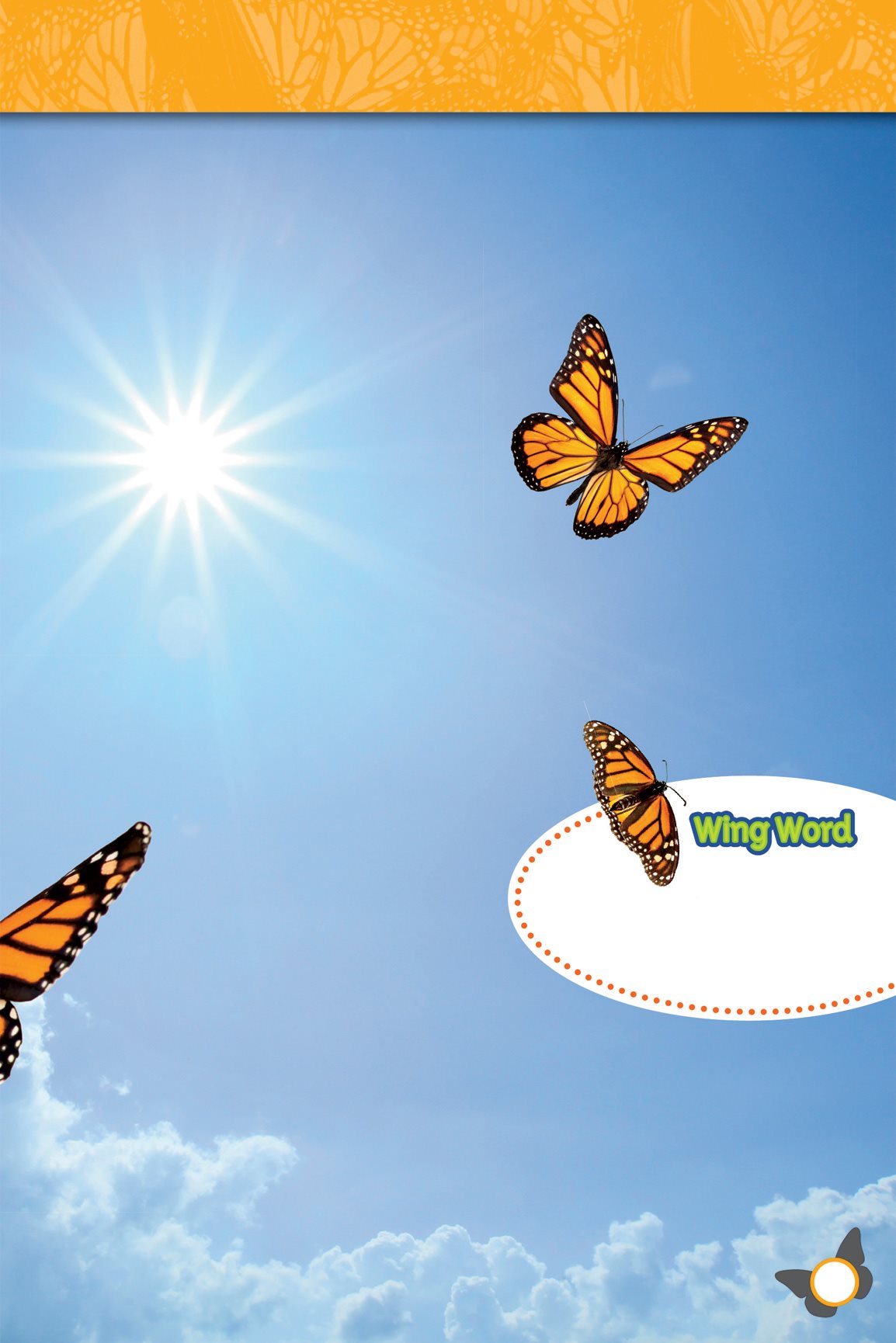
INSTINCT: Behavior that animals are born knowing how to do

Each year, the monarchs migration takes several generations. Three or four generations complete the trip north. But only one generation makes the return trip south.
That means that if you started the journey, your great, great grandchildren would finish it.
How does this work?
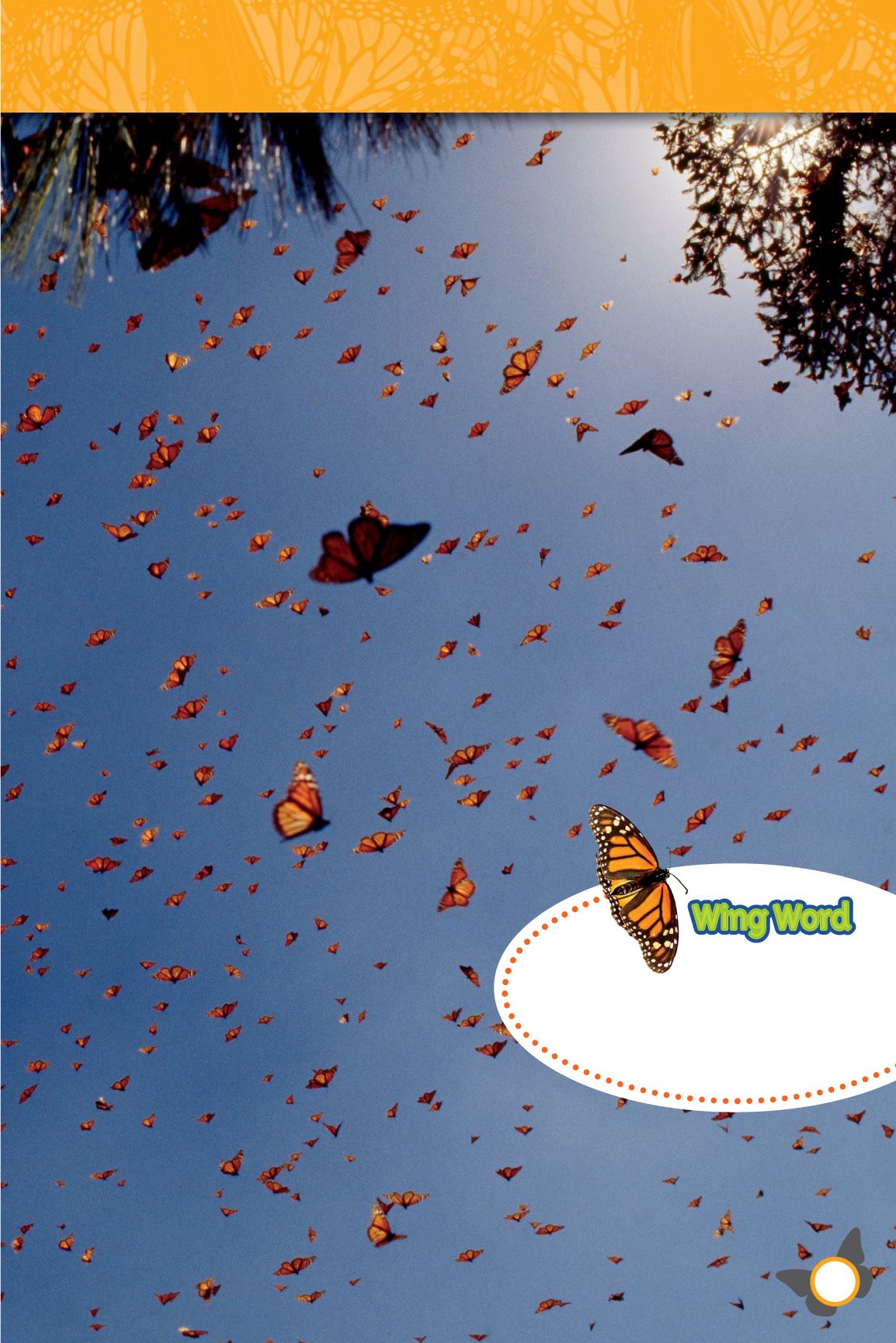
GENERATION: Time it takes for a living thing to grow up and reproduce

The first three or four generations live two to six weeks as adult butterflies. During the spring, the first generation hatches in the south. They fly north as far as they can. Then they lay eggs and later die.
The second generation continues the journey, lays eggs, and dies. The third and sometimes fourth generations hatch through the spring and summer. They finish the journey north.
Adults appear to have four legs, but they really have six. Their two front legs are small. They are curled up and hard to see.

Mexico
st
Canada
United States
th
rd
nd
OyamelForests





